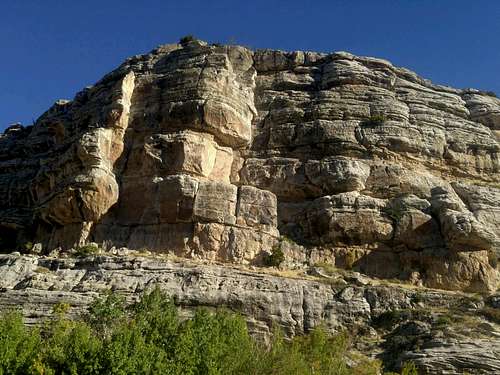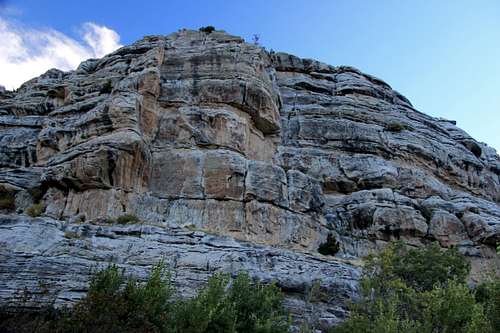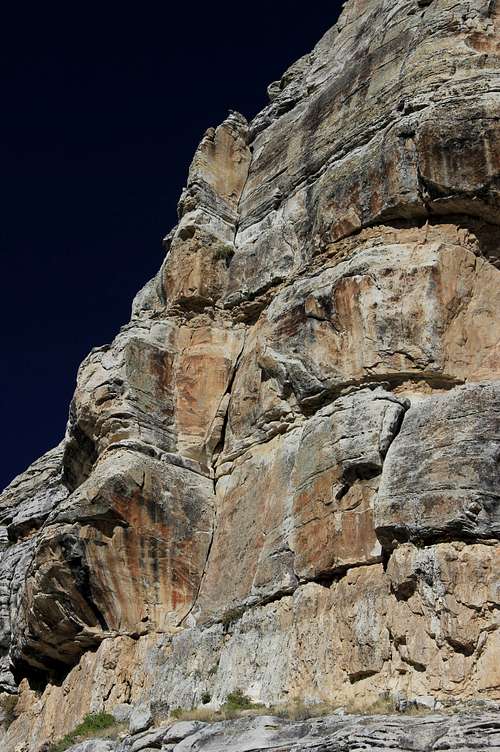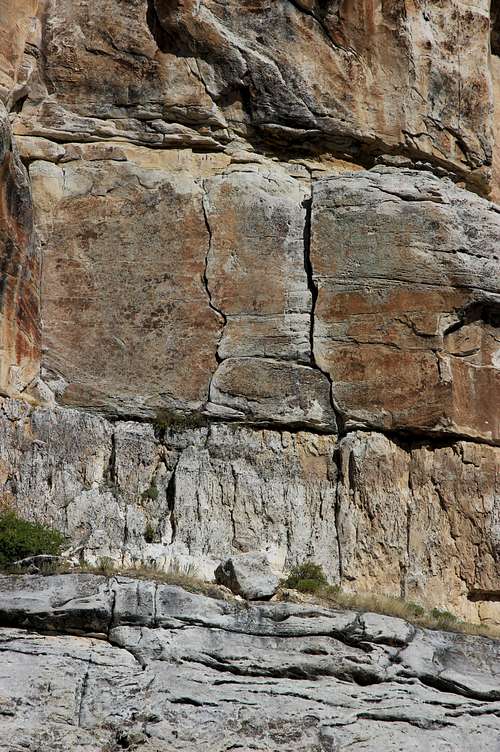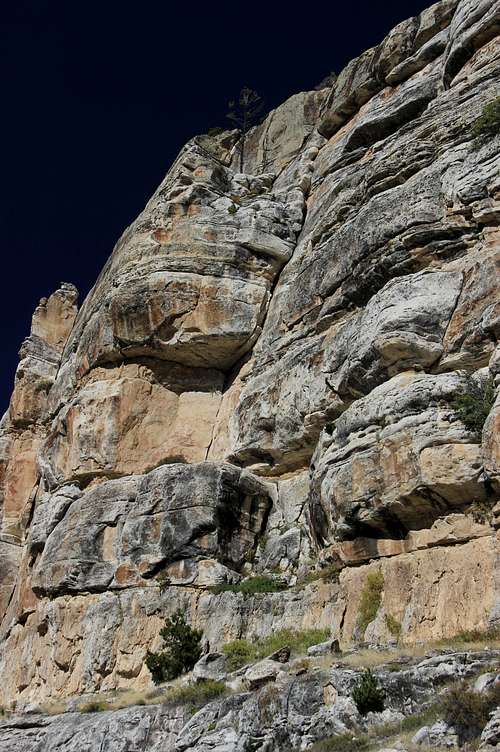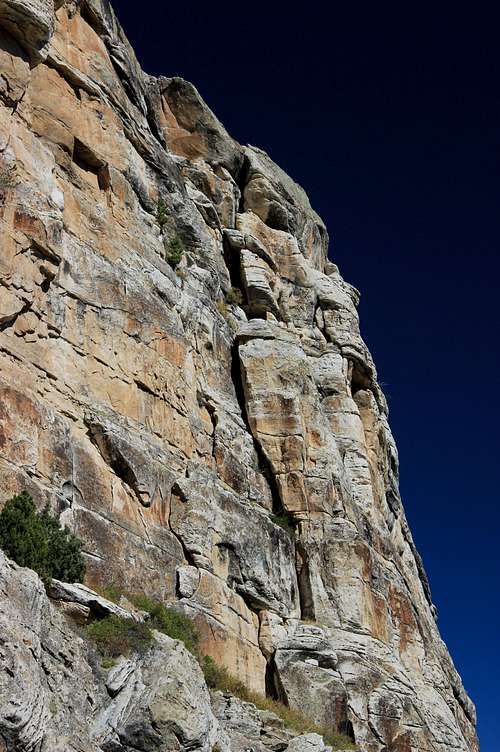-
 2898 Hits
2898 Hits
-
 80.49% Score
80.49% Score
-
 12 Votes
12 Votes
|
|
Mountain/Rock |
|---|---|
|
|
42.76038°N / 108.80518°W |
|
|
Trad Climbing, Sport Climbing, Toprope |
|
|
Spring, Summer, Fall |
|
|
6800 ft / 2073 m |
|
|
Overview
While one ascends through Sinks Canyon, he or she will pass through sections of sandstone, limestone, and then granite as the landscape changes from high desert to the foothills of the incomparable Wind River Range. Although the outstanding limestone sport climbing gets most of the attention (from climbers) in Sinks (it is considered a destination area and is even home to a major climbing festival each summer), there are good sandstone sport and trad routes up to four pitches in length.Despite the fact that the routes on Sandstone Buttress are probably the easiest and shortest to approach in all of Sinks Canyon, you probably will not find crowds here since most people are busy racing up the canyon to hit the limestone areas. Established routes on Sandstone Buttress range from the easier end of moderate to difficult.
Here in west-central Wyoming at the edge of the mountains and one of America's great wilderness ecosystems, you can get a taste of southern Utah. It's pretty cool.
Getting There
From downtown Lander, follow signs to Sinks Canyon State Park. It takes about 15 minutes to reach the park boundary.
Sandstone Buttress is the first large formation on the right after you cross into the state park. There is a large parking area, with trash cans and an interpretive sign about Sinks Canyon; right across the road is a group area with restrooms and an elephant kids like to climb on. You can't miss this unless you're blind or so absorbed by your phone that you might as well be.
If you have reached Sinks Canyon the other way, from WY 28, then note that Sandstone Buttress is the last formation on the left before you leave the state park.
Routes
On this formation, there are trad, sport, mixed (as in trad/bolts), and toprope routes. For example, just across the road before the parking area is a toproping area called Road Test Wall.
To be honest, I'm not sure what or where all the routes are. So I am going to list and comment only on routes I have climbed or positively know something about. For more routes, please see the Mountain Project page.
All these routes begin from the obvious big ledge seen from the pullout. Trails lead up to it, and the approach is only a few minutes.
From left to right:
- Gunky (5.8)-- Trad, 2 pitches, 200'. On the ledge, locate the long crack/corner system near the left end. You can't miss it. This is said to be the best trad route here. Walk off.
- No Name Crack (5.7)-- Trad or TR, 1 pitch, 40'. The first of two obvious moderate single-pitch crack routes. Fun route, leads to ring anchors up top. This will definitely take gear all the way up, but I just toproped it after scrambling the first pitch of Standard Start and then traversing to the anchors for Standard Crack and then this one.
- Standard Start (5.7)-- Trad or TR, 1 pitch, 40'. Another fun one that I just toproped. It can be led, but higher up, the crack gets really wide and you will need something larger than a C4 #4 unless you want to run out the last 10'.
- Standard Route (5.6 or 5.8)-- Trad, 4 pitches, 200'. Can be done in 2 pitches, but have fun with the rope drag. The grade depends on your choice for the last pitch-- easy line up and left or a harder line straight up a slab and through a roof. The 5.8 finish is easy to protect and is a lot of fun. Do it as long as your follower can handle at least 5.7 on TR. Bolted anchors for all pitches. Walk off.
- Sentinal Chimney (5.7)-- Trad, 2 or 4 pitches, 200'. This is the obvious chimney/crack system at the right end of the ledge. The person who established this route intended it as two pitches; someone else came along and did a lot of bolting so that now this can be 4 pitches, each with chains and rings for anchors, and with bolts to clip en route. It's fun regardless, and if you don't have off-width and/or chimney technique, you'll think this is harder than 5.7. Bolted anchors for all pitches. Walk off or rappel back down in two "rappel pitches" or one if you have two 60m ropes.


